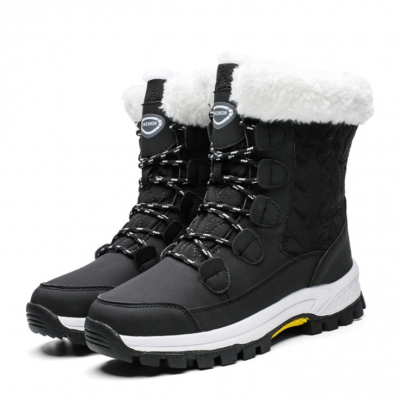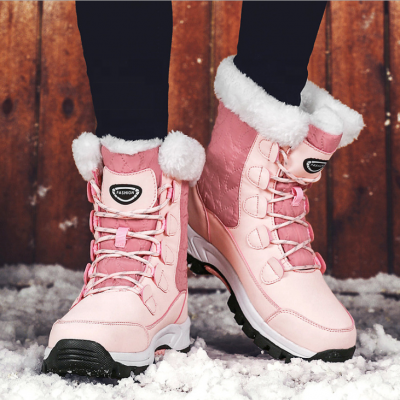Commonly used leathers for safety shoes include genuine leather, recycled leather and artificial leather. Genuine leather is the original skin peeled off from animals, and it is an essential material for modern leather products. Recycled leather is made by pulverizing various animal skins and leather scraps, and then blending chemical raw materials. Artificial leather is made on the basis of woven fabric or non-woven fabric by foaming or laminating of PVC and PU of various formulas. It can be processed according to different strength, abrasion resistance, cold resistance and color, gloss and pattern. Patterns, etc. require processing.
Genuine leather
Genuine leather is the raw leather peeled off from cattle, sheep, pigs, horses, deer or some other animals. After tanning and processing in a leather factory, it is made into leather materials with various characteristics, strength, feel, colors and patterns. It is a modern leather product. Necessary materials. Among them, cowhide, sheepskin and pigskin are the three major skin types used in tanning. The dermis is divided into two types: the first layer of leather and the second layer of leather.
(1) The first layer of skin is grained cow, sheep, pig skin, etc. The skin has natural scars and blood tendons, and occasionally there are cuts during processing and the belly part with extremely low utilization. The imported first layer leather also has the cow’s serial number imprint. Full-grain leather can distinguish animal leather from the thickness and density of pores. There are many types of cowhide, such as cowhide cowhide, beef cowhide, grazing cowhide, cowhide, bullhide, uncastrated bullhide and castrated bullhide. In our country, there are yellow cowhide, buffalo cowhide, yak cowhide and yak cowhide. Among them, the pores of buffalo leather are thicker and sparse; yellow leather is thinner and denser than that of buffalo leather. The pores of sheepskin are finer, denser and a little sloping, and there are mainly two types of sheepskin and goatskin. Pig skins are easily distinguished due to the distribution of 3 to 5 hairs in a small number of hairs. Generally, artificially raised pig skins and wild boar skins are used. The famous South American wild boar has obvious characteristics. Pig skin pores and grain characteristics, due to its special collagen fiber tissue structure, can be processed into very soft clothing leather or glove leather, which is of high value. In addition, ostrich skin, crocodile skin, short-nosed crocodile skin, lizard skin, snake skin, bullfrog skin, saltwater fish skin (including shark skin, cod skin, eel skin, eel skin, pearl fish skin, etc.), freshwater fish skin ( There are grass carp, carp skin and other scaly fish skins), furry fox skins (silver fox skins, blue fox skins, etc.), wolf skins, dog skins, rabbit skins, etc., which are easy to identify and cannot be made into double skins.
The scalp skin is directly processed from the raw skins of various animals, or the thicker skins of cows, pigs, horses and other animal skins are dehaired and cut into upper and lower layers. The upper part with tight fibrous tissue is processed into various heads. Layer of skin.
(2) The two-layer skin is the two-layer part with relatively loose fiber structure, which is processed by spraying chemical materials or covering with pvc and pu films.
Therefore, an effective way to distinguish the first layer of skin and the second layer of skin is to observe the fiber density of the longitudinal section of the skin. The first layer of skin is composed of a dense and thin fiber layer and a slightly loose transition layer closely connected to it. It has the characteristics of good strength, elasticity and process plasticity. The second layer of leather has only a loose fiber structure layer, which can only be used to make leather products after spraying chemical raw materials or polishing. It maintains certain natural elasticity and technological plasticity characteristics, but its strength is poor, and its thickness is required to be the same as that of the first layer. The same as the skin. There are also various leathers that are used in popular production today. The leather surface processing technology is somewhat different, but the distinction method is the same.
Regenerated leather
Recycled leather is made by pulverizing various animal skins and leather scraps, and then blending chemical raw materials. Its surface processing technology is the same as that of leather trimmed leather and embossed leather. Its characteristics are that the edges of the leather are relatively neat, the utilization rate is high, and the price is low; but the leather body is generally thicker and weaker, so it is only suitable for making cheap briefcases and trolley bags. Shaped craft products such as, cue sleeves and cheap belts have uniform fiber structure on the longitudinal section, and the coagulation effect of fluid mixed fibers can be recognized.
Artificial leather
Recycled leather is also called imitation leather or rubber, which is a general term for man-made materials such as pvc and pu. It is made on a woven fabric base or a non-woven fabric base by foaming or laminating processes such as pvc and pu with various formulas. It can be made according to different strength, abrasion resistance, cold resistance, color, gloss, and pattern. Patterns and other requirements are processed and made. It has the characteristics of a wide variety of colors, good waterproof performance, neat edges, high utilization rate and relatively cheap price compared to real leather. However, most of the artificial leather cannot reach the effect of real leather in its feel and elasticity. On the cut surface, you can see fine air bubbles, cloth base or surface film, and dry artificial fibers. It is a very popular type of material from the early days to the present. It is commonly used to make all kinds of leather products, or some genuine leather materials. Its increasingly advanced production technology is being widely used in the processing and production of two-layer leather.



















